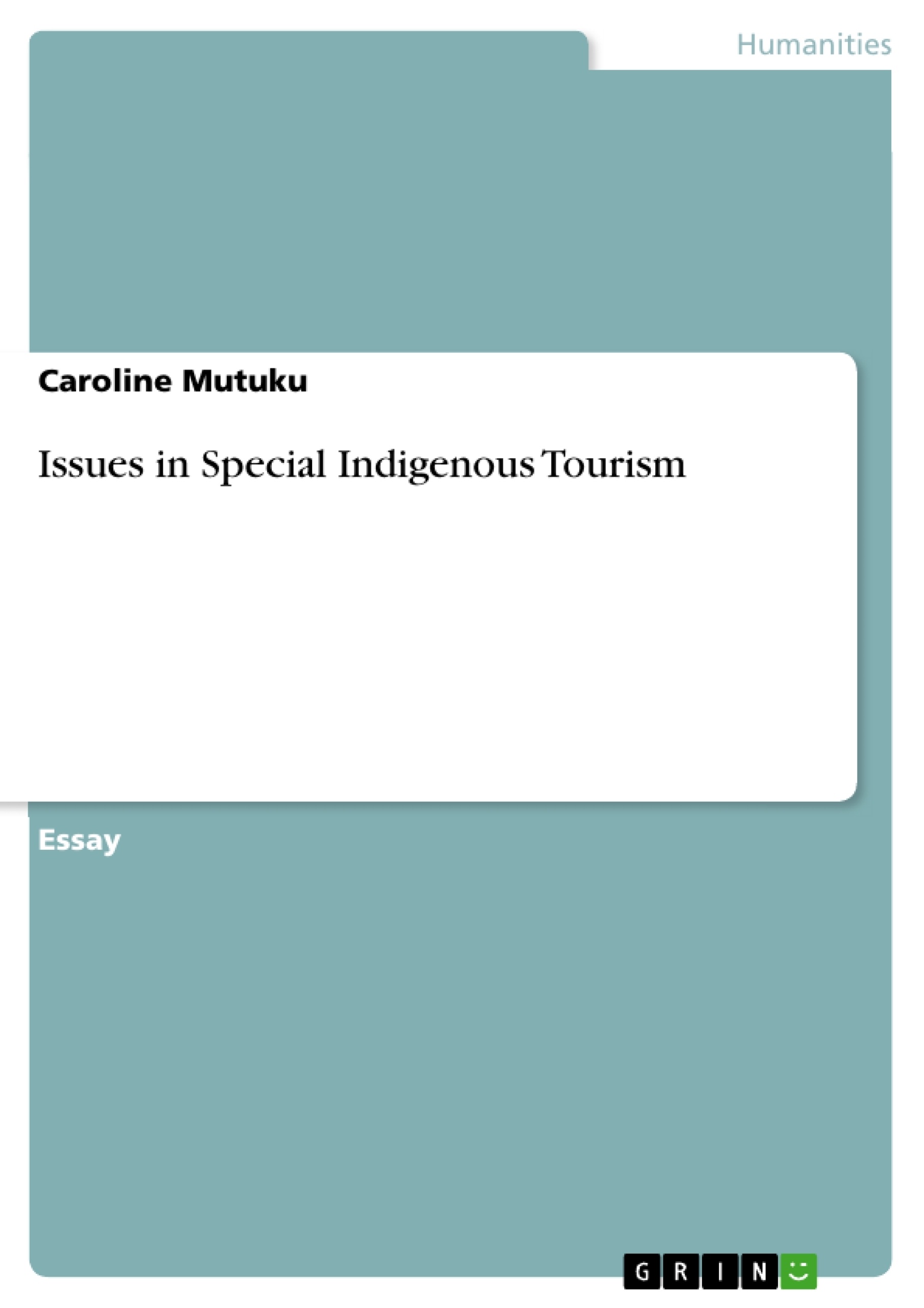It has emerged that, indigenous tourism has become a significant ‘getaway’ in which it has enabled people to develop confidence in the true meaning of life through maintaining a desirable live balance. Currently, indigenous tourism is regarded to as one of the most reliable ways of preserving indigenous culture, which is facing the threat of extinction owing to the forces of globalization characterized by the absorption of some cultures. The significance of indigenous tourism can be explained by the phenomenon of survival among the aboriginal people who passed over their knowledge onto others.
In reality, indigenous tourism is kept alive by its commercial aspect, although this aspect endangers the purity and delicacy of the aboriginal community, especially when inappropriate attitudes are adopted. Therefore, this paper will provide a comprehensive overview of the development of indigenous tourism in Australia and Canada. Concisely, it will focus on the principal approaches employed in establishing indigenous tourism such as the attraction of both domestic and international tourists.
Inhaltsverzeichnis (Table of Contents)
- Abstract
- Introduction
- Discussion
- Authenticity
- Sustainability
- Trends
- SWOT Analysis
- Conclusion
- References
Zielsetzung und Themenschwerpunkte (Objectives and Key Themes)
This paper aims to provide a comprehensive overview of the development of indigenous tourism in Australia and Canada. It focuses on the principal approaches employed in establishing indigenous tourism, including the attraction of both domestic and international tourists, and examines the challenges and opportunities associated with authenticity and sustainability in this unique form of tourism.
- The evolution and significance of indigenous tourism in Australia and Canada
- The importance of authenticity in preserving indigenous culture and attracting tourists
- The role of sustainability in ensuring the long-term viability of indigenous tourism
- The impact of globalization on indigenous cultures and the potential of tourism for cultural preservation
- The different perspectives and approaches to indigenous tourism in Australia and Canada
Zusammenfassung der Kapitel (Chapter Summaries)
- Abstract: Provides an overview of the paper's focus on the development of indigenous tourism in Australia and Canada, highlighting the importance of authenticity and sustainability in preserving indigenous cultures.
- Introduction: Justifies the selection of Australia and Canada for comparative analysis, noting differences in terminology and the evolving nature of indigenous tourism in these countries.
- Discussion: Explores the motivations behind tourism in general and how indigenous tourism offers a unique experience, focusing on the differing perspectives of Australia and Canada regarding the nature and purpose of aboriginal tourism.
- Authenticity: Discusses the importance of authenticity in indigenous tourism as both a source of attraction and a managerial challenge, highlighting its role in preserving cultural heritage and attracting tourists.
- Sustainability: Examines the integral role of sustainability in indigenous tourism, arguing that it provides a solution to the challenges posed by authenticity and ensures the long-term viability of the industry.
Schlüsselwörter (Keywords)
The paper primarily focuses on the themes of aboriginal tourism, indigenous tourism, authenticity, and sustainability. It examines the development of indigenous tourism in Australia and Canada, highlighting the unique challenges and opportunities associated with preserving cultural heritage and attracting tourists while ensuring the long-term viability of the industry.
- Citar trabajo
- Caroline Mutuku (Autor), 2018, Issues in Special Indigenous Tourism, Múnich, GRIN Verlag, https://www.grin.com/document/429719



